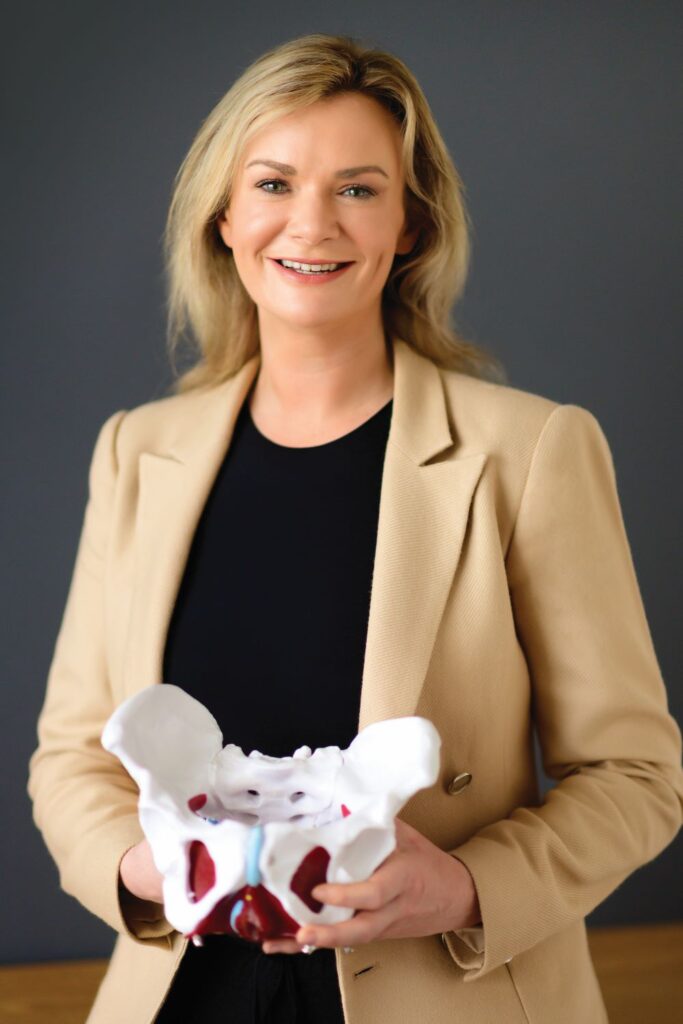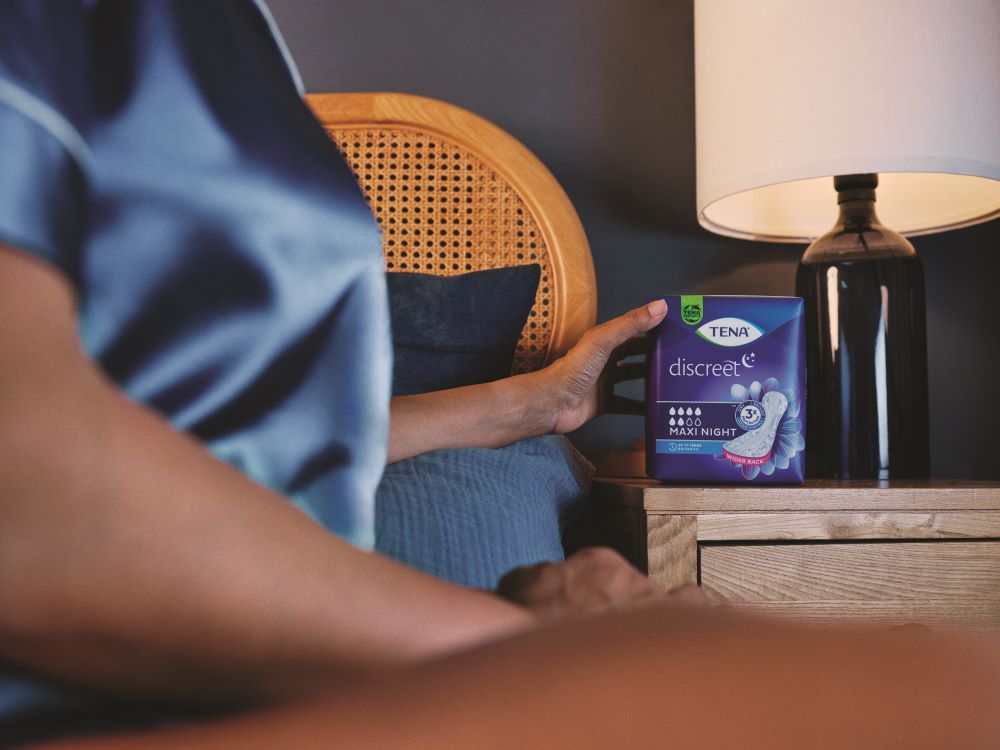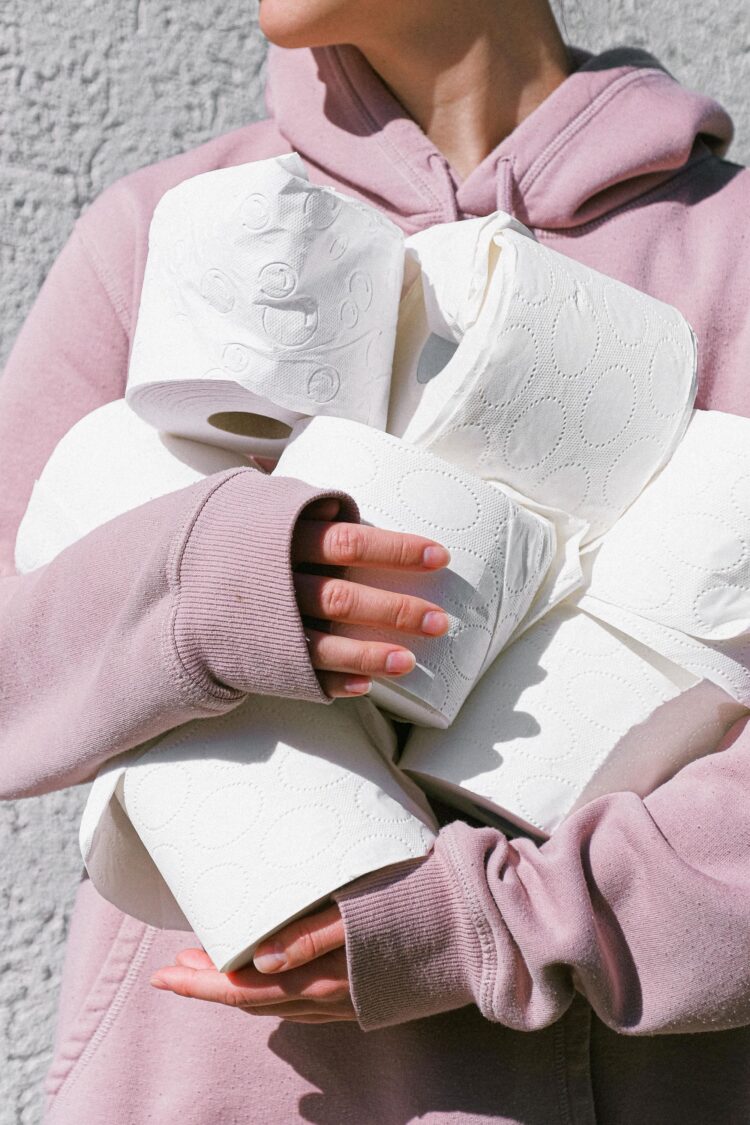Aoife Harvey, a women’s health specialist Physiotherapist, is on a mission to educate women on their pelvic health, so that they do not suffer in silence. Here, in partnership with TENA – renowned for its trusted incontinence products – Aoife shares the ways in which you can reclaim your confidence and improve your quality of life
On average, women take three-four years to see their doctor with symptoms of urinary incontinence, says Women’s Pelvic Health Specialist Physiotherapist Aoife Harvey.
“Whilst it is common, it is not “normal” and you do not have to put up with it,” she says. “There are many treatment options available – we can cure or improve between 60-70% of women with bladder incontinence with pelvic floor exercises, pessaries, advice on lifestyle modifications and sometimes medications.”
Aoife is passionate about improving women’s quality of life by helping with bladder symptoms.
“Pelvic health dysfunction can really impact women’s confidence, ability to exercise and socialise. Unfortunately, their relationships can be impacted, they can feel socially isolated and impact their sexual health too due to reduced sensation, fear of leaking and lack of confidence,” she says.
“Giving women back their ability to exercise and socialise, without the fear of leaking or needing to be close to a toilet is so important for their quality of life, and very rewarding for me,” she continues. “Taking the time to listen, empathise, educate and formulate a treatment plan with our patients is life changing for them. As physiotherapists we have a saying; “doctors save lives, physiotherapists improve your quality of life.”

However, as we are aware, so many women are afraid to ask for help, shrouded in shame. “Do not suffer in silence,” Aoife implores. “A pelvic health Physiotherapist is a great place to start. We take our time with your assessment and we are very gentle and reassuring. We will explain everything clearly to you and refer you on to a specialist doctor if needed.
“Many women are anxious or embarrassed and reluctant to have a vaginal exam. It is very gentle and pain-free. As women, we should be looking after our bladders and vaginal health, like we do our teeth and eyes.”
We should also be performing pelvic floor exercises three times daily, according to Aoife. “Aim to squeeze and hold for ten seconds and repeat ten times, followed by ten fast squeezes,” she says. “Ideally see a pelvic health Physiotherapist to learn how to do them. The easiest position is laying down with knees bent and feet flat. You could do a set in the morning and last thing at night before going to sleep, leaving one more set to do in the day. Setting a reminder on your phone is a good idea.”
She adds: “You could add them into your skincare routine or even brushing your teeth, although some people find them more difficult in standing or need to focus solely on their exercises with no distractions.
If you go to exercise classes, try to do them at the beginning and end of the class or add them into an exercise. For example, when you do squats, squeeze your pelvic floor as you stand up from the squat. You should do pelvic floor exercises daily, for 12 weeks, to know if they are helping your symptoms or not.”
However, Aoife is keen to point out that there is a misconception that bladder leaks mean you have a weak pelvic floor. Common causes of stress incontinence can range from injury after vaginal deliveries, pelvic floor muscles dysfunction, high BMI, prolapse of the uterus, bladder or urethra and changes to the bladder and its support system during and after menopause, and as we age in general.
Urge incontinence can be caused by hormonal changes during menopause and beyond, urinary tract infections, and bladder cystitis. “Some women experience a sensory urgency, when they hear running water or get in the shower or reach the front door of the house for example, their brain sends a signal to the bladder and the bladder muscles start to squeeze very strongly,” Aoife says. “Caffeinated drinks and acidic foods can cause urgency symptoms for some, while constipation is also a factor for bladder urgency; if the bowel is full, it can add pressure to the bladder and cause urgency symptoms.”
Aoife also notes that hypermobility syndrome such as Ehlers–Danlos syndromes (EDS), means the connective tissue that supports the bladder is more mobile and can leak more easily, while a history of childhood bladder or kidney dysfunction can increase the risk of bladder symptoms later in life.
“Some women have bad bladder habits for many years; often going to the toilet “just in case”,” she adds. “When leaving the house or arriving at different destinations, they become nervous that they may not have access to a toilet so they empty their bladder at every opportunity. This can lead to a more sensitive bladder that signals it is full even when it is not. The average bladder capacity is 400-500ml. We should only feel a very strong urge when the bladder is nearly full.”

With that in mind, while pelvic floor exercises are the recommended first line treatment, it is not a one-size-fits all solution and there are alternative treatment options should your incontinence not respond to this – including vaginal oestrogen, silicone pessaries and tibial nerve stimulation using a TENS machine. Managing diet, weight, bowels, and smoking cessation can have a significant impact on symptoms, Aoife says. “Like all health conditions, the cause of the problem will dictate the best treatment and a thorough assessment is key,” she advises.
She adds: “Unfortunately, we cannot always cure urinary incontinence and some women will need to use incontinence pads. Firstly, it is important to say, sanitary towels, for menstruation, are not rerecommended for incontinence. Urine is not the same as blood and an incontinence pad will keep you dryer for longer.
“TENA’s products are designed with several key features to ensure effectiveness and discretion for everyday wear. They are consciously made with soft, breathable materials, which helps prevent skin irritation, particularly for those with sensitive skin. In fact, they are dermatologically tested and formulated without fragrances or dyes, and the packaging is made from 100% renewable fibres, demonstrating the brand’s commitment to sustainability while still ensuring product effectiveness.
“TENA offers a range of products, sizes and absorbencies. This ensures that individuals can choose the product that best meets their needs for both protection and comfort. They quickly absorb and distribute urine to keep the wearer dry and fresh, preventing the embarrassing odours and discomfort associated with bladder leakage.”
For more on TENA products, available in pharmacies nationwide, visit tena.ie. For more information on Aoife Harvey, visit womenshealthdublin.ie









